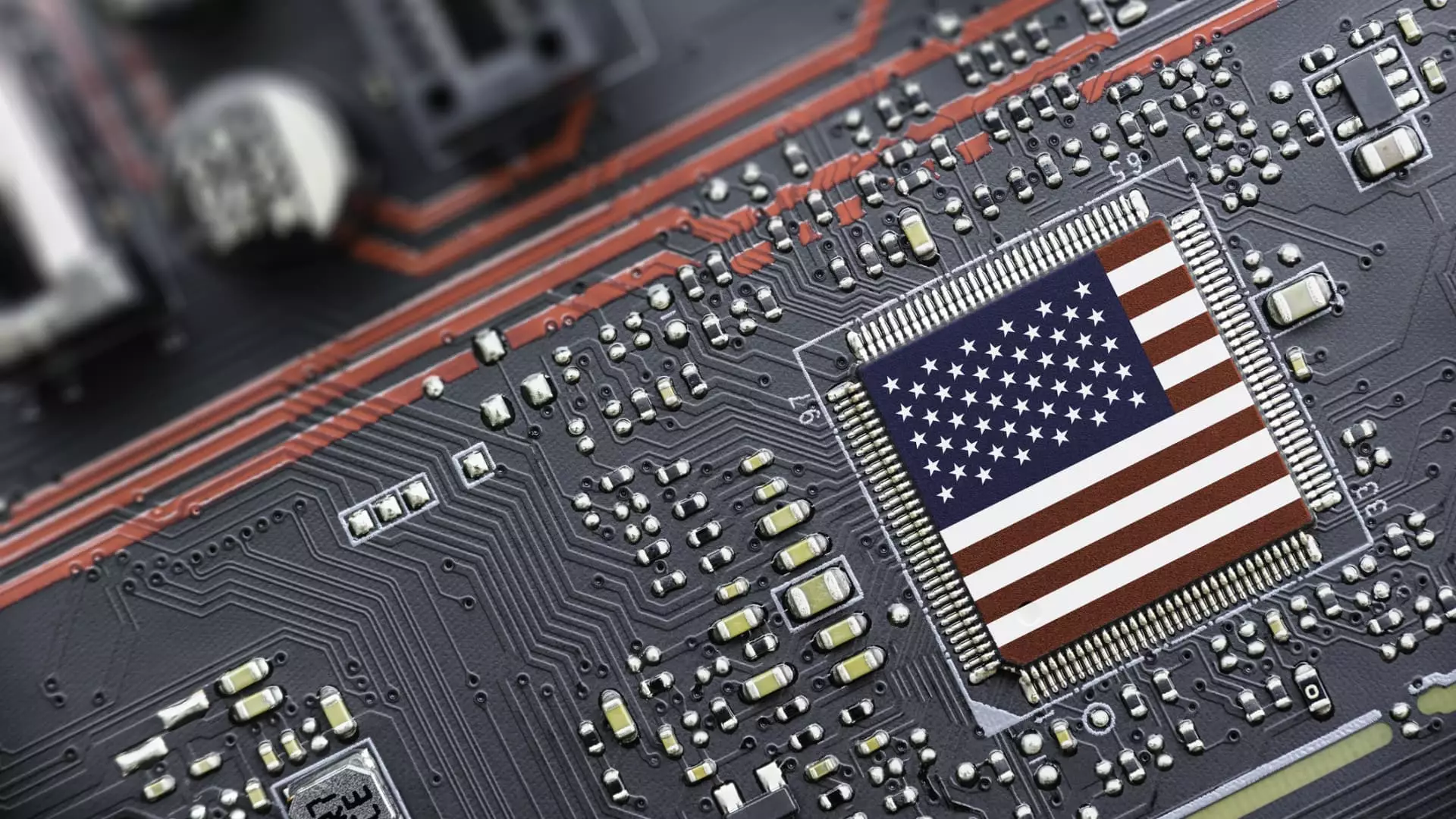The U.S. Commerce Department’s recent announcement of a national security investigation into semiconductor imports marks a pivotal moment in the country’s ongoing trade dialogue. With significant implications for both the economy and national defense, this investigation not only underscores America’s dependence on foreign semiconductor technology but also reflects a determination to reclaim its standing in a critical sector that powers modern technology. President Donald Trump’s tariffs are no longer merely a negotiation tactic; they have significant ramifications that extend far beyond mere trade balances.
This move indicates a broader strategy to weave national security concerns into economic policy, particularly in industries deemed vital to the nation’s technological prowess. As semiconductors serve as the backbone of virtually all electronics, from smartphones to advanced military systems, a domestic surge in semiconductor production could significantly alter the landscape of international trade relations.
The Layered Complexity of Tariff Proposals
The complexities surrounding the proposed tariffs reveal a layered decision-making process where economic strategy intertwines with geopolitics. Initial exemptions granted to certain electronics may be short-lived, suggesting a calculated maneuver aimed at minimizing immediate disruption while still paving the way for more aggressive measures down the line. It’s a balancing act of sorts, attempting to appease both the domestic market and international allies, while also laying groundwork for future protective measures.
Trump’s suggestion that new tariffs could be announced within a week, complemented by Commerce Secretary Howard Lutnick’s comments on impending tariffs, highlights the urgency behind the investigation. It is not just an isolated discussion about semiconductors; it’s intertwined with larger narratives about economic sovereignty and the future of American manufacturing. The national security justification under Section 232 of the Trade Expansion Act hints at a more robust framework to shield American industries from perceived threats, both from economic competitors and foreign governments.
Diversifying the Supply Chain
The investigation reaffirms a long-held belief that a diversified supply chain is imperative for national security. The U.S.’s heavy reliance on semiconductor imports from countries such as Taiwan, South Korea, and the Netherlands has raised alarm bells among policymakers who worry that dependence could compromise both economic and technological security. By evaluating the feasibility of bolstering domestic semiconductor capacity, the U.S. is seeking to instigate an industrial renaissance that will diminish foreign reliance while also courting investment from tech giants.
The recent announcements from companies like Nvidia to produce AI supercomputers within the U.S. and Taiwan Semiconductor Manufacturing’s commitment to invest an additional $100 billion in American infrastructure demonstrate a twofold approach. Not only are these companies pushing for greater domestic presence, but they are also signaling to the market that American ingenuity and infrastructure can support high-demand technologies.
Impact on the Global Trade Landscape
The ramifications of this semiconductor investigation are far-reaching, with potential impacts reverberating through the global trade landscape. As the U.S. moves toward increasing tariffs and ramping up domestic production, it risks instigating a trade war that could see competing nations retaliate. However, as Trump’s administration flexes its muscles with potential tariffs, it could inadvertently spur other nations to accelerate their own technological advancements and innovations in semiconductor manufacturing.
While some may argue that rising tariffs could stifle growth and increase costs for American consumers, the long-term vision of establishing a self-sufficient semiconductor industry may ultimately outweigh these short-term inconveniences. The path toward semiconductor independence could foster job creation and ignite new innovations, placing the United States back on the cutting edge of technology.
As the U.S. grapples with its reliance on foreign semiconductor technologies, the current investigation is a clarion call for a more self-sufficient future. The stakes are high, with national security, economic viability, and global competitiveness hanging in the balance. This paradigm shift could redefine American manufacturing and reshape how technology is both developed and distributed in the coming decades. Amidst the complexities of tariffs and trade dynamics, the focus on semiconductors serves as a compelling case for a proactive and strategic approach to governance that capitalizes on America’s strengths while addressing its weaknesses.


Leave a Reply